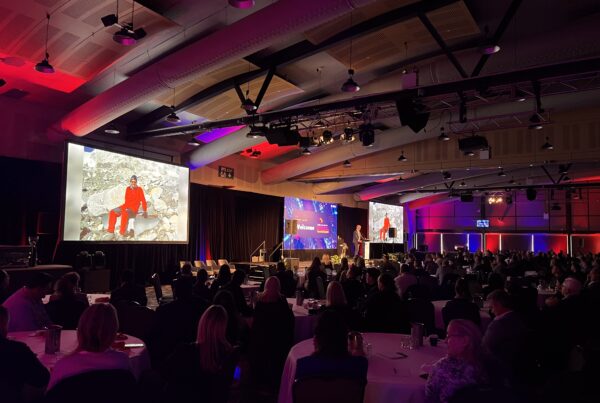Fleet management involves careful planning, efficient operations, and constant improvement. Sarah Johnson, Head Consultant at WLC Fleet Consulting, spoke at the Queensland Professional Development Forum about in-sourcing and outsourcing fleet management. She shared helpful tips to help organisations choose the best option for their needs.
Managing a Fleet of Any Size
When it comes to managing a fleet of any size, you need strong systems, clear policies and an effective process in place. For fleet managers, this means creating policies that align with the organisation’s goals, managing the entire life cycle of vehicles, and keeping costs under control through budgeting and reporting.
Safety and risk management are also essential, along with using data to track performance and make informed decisions. Fleet strategies need to match the wider goals of the organisation and should be reviewed regularly for continuous improvement.
“The first lesson I want you all to remember is that you can’t outsource any of your strategic decisions in any way, shape, or form. That is something you absolutely need to always keep in-house,” Sarah said.
She also explained that it’s important to separate funding and management models so organisations can focus on their operational and strategic priorities.
What is In-Sourcing?
In-sourcing means managing fleet operations within the organisation, using its resources and expertise. This approach covers tasks like designing assets, buying vehicles, and handling dealer communications.
Once the fleet is running, in-sourcing also includes managing fuel cards, tolls, roadside assistance, and driver safety training. It involves monitoring performance with telematics, doing vehicle inspections, handling maintenance and repairs, and managing vehicle registration, insurance, and end-of-lease processes.
The benefits of in-sourcing include more control over operations, better data security, potential cost savings, and alignment with the organisation’s values. But it can also mean higher overhead costs, the need for specialised knowledge, and challenges with scaling, especially for smaller organisations.
What is Outsourcing?
Outsourcing means engaging with outside companies, known as Fleet Management Organisations (FMOs) or other specialised companies, to handle fleet tasks. Common services include buying vehicles, customer service, and ongoing tasks like roadside assistance, repairs, and recalls.
“Getting started, it’s that whole acquisition piece—quoting, working with dealerships, purchasing the vehicle, and settling finances. Then, it’s everything needed to get the vehicle on the road and maintain it, from fuel cards to insurance and tolls. Depending on your fleet size, this can be a significant or manageable task,” explained Sarah.
Outsourcing provides access to expert knowledge, reduces operational burden, and can lower costs while reducing risks. However, it might lead to loss of control, dependency on vendors, and data security concerns. There can also be unexpected or higher costs.
Your Role in Outsourced Fleet Management
Even when outsourcing, fleet managers still maintain their key responsibilities.
“The role changes a little bit. You become more of a vendor manager, focusing on contracts, SLAs, and KPIs in a partnership approach,” Sarah said.
Managing commercial aspects is also vital, as organisations need to track costs and make sure they align with agreements.
“It’s crucial to track consolidated costs, validate them against agreements, and assess whether expectations align with actual outcomes,” she explained.
Because of this, clear communication, both proactive and reactive, is necessary for smooth operations. Strategic oversight should always remain with the organisation.
“The strategic element is something you must ensure is appropriately resourced internally, even if not dedicated, depending on fleet size.”
She added, “Fleet administrators don’t understand your organisational goals, ESG targets, or commercial constraints. Their role is to administer and ensure compliance—not to align with your strategic direction.”
Pros and Cons of Each Approach
Both in-sourcing and outsourcing have their own advantages and challenges.
“What works well for one fleet might drive another to outsource. Every fleet has different needs based on size, maturity, and internal resources,” Sarah noted.
In-sourcing gives more control, can save costs, and ensures data security, but it also incurs higher overhead costs, requires more resources, and may face scaling issues. Meanwhile, outsourcing provides expertise, reduces costs, and mitigates risks, but it can lead to dependency, loss of control, and communication issues.
“Every fleet has a different problem statement, a different ‘what’ and ‘why.’ Organisations must evaluate what works best for their specific situation,” she said.
Making the Decision
Deciding whether to in-source or outsource fleet management depends on factors like fleet size, complexity, criticality and importance.
For large fleets with simple needs, outsourcing can work well, as the tasks involved are mostly administrative. However, Johnson pointed out, “Every fleet is different, and you need to go on your own journey to understand what will work best and why.” Complex fleets may benefit more from in-sourcing to retain control.
Regular review’s are also critical. “Fleets go in cycles. What worked well five years ago may not suit your current needs. A new third-party provider might now address problems you’ve struggled with for years. It’s always important to test the market, explore what’s available, and pivot if necessary,” Sarah explained.
Systems, People, and Processes
Regardless of whether you in-source or outsource, having the right systems, people, and processes is key. A central platform for managing data is essential. “Whether you’re insourcing or outsourcing, it’s critical to consolidate your inventory, historical records, driver data, and telematics into one platform. This allows you to pull insights from data,” Johnson explained.
“Don’t rely on mashing together Excel spreadsheets from different providers—invest in a framework that simplifies your processes.”
Planning for Transitions
When switching between in-sourcing and outsourcing, it’s important to lay a solid foundation.
“Every program needs to work in times of business-as-usual (BAU), growth, and stress. Before any transition, ensure your policies and procedures are in place and that you’ve mapped out processes in detail.”
“It’s not just about paying fuel cards—it’s about understanding how you pay them, the time it takes, and ensuring that everyone involved understands the process.”
For critical fleets, Johnson suggested having a business continuity plan. “If your fleet serves 24/7 operations, healthcare, or emergency services, ensure you have a plan for maintaining operations during disruptions. This includes keeping some fleet vehicles available even in emergencies,” she said.
People Considerations
The decision to in-source or outsource will also affect staffing needs. Johnson said, “You’ll need more personnel for in-sourcing, while outsourcing theoretically requires fewer staff. But either way, having the right people with the right expertise is essential to success.”
By carefully evaluating the unique needs of your fleet and preparing properly, organisations can confidently make the best decisions about their fleet management programs.
Key Takeaways
A balanced approach to fleet management that combines in-sourcing and outsourcing often delivers the best results. However, Johnson stressed that strategic control must remain in-house: “You can’t outsource your strategy.”
Regular reviews are essential to ensure the program aligns with the organisation’s goals, while financial and staffing considerations should be factored into any decision.
Transparency about costs, especially in outsourcing, is also crucial. “Ask questions about any potential additional costs and ensure they’re included in your master services agreement (MSA),” Sarah said.
By understanding these factors, organisations can optimise fleet management, boosting their efficiency, safety, and alignment with their broader objectives.
AfMA would like to extend a warm thank you to Sarah Johnson for sharing her expertise and insights to our attendees.
Did you find this article interesting? Click the ‘heart’ button above to give it a ‘like’!


















